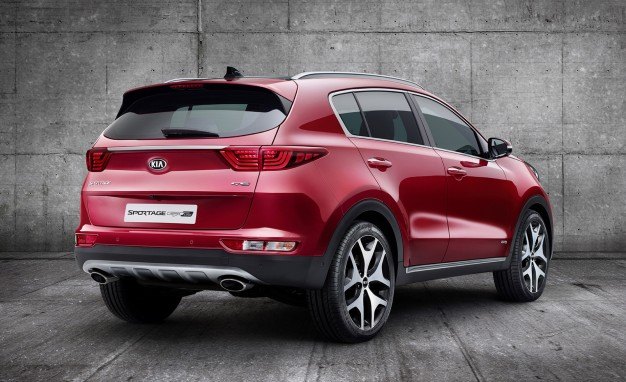Kia Ready to Launch Its Mildest Hybrid Yet

It isn’t a model, it’s simply a powertrain. After the recent announcement of the Niro Electric and earlier hybrid and plug-in hybrid applications, Kia’s ready to dial it way back for the masses.
The automaker has announced a 48-volt mild hybrid system that shouldn’t confuse unsavvy buyers, providing it never uses the word “hybrid” in their company. The system’s name? EcoDynamics +.
Kia’s mild hybrid takes a traditional form. A belt starter generator fed by a 48-volt battery located under the trunk or cargo floor adds a small amount of electric “boost” to the engine’s crankshaft via the serpentine belt, taking the strain off the gas or diesel powerplant. Kia claims the system adds 13.4 horsepower to the mix. The system also handles a beefed-up stop/start system, and recharging comes by way of regenerative braking or coasting while in gear.
Kia’s stop/start goes further than conventional systems, shutting down the engine while the vehicle is in gear and moving forward (while coasting or braking). That’s if the battery’s charge allows it. At any time, the driver can stomp on the accelerator and have the system refire the engine.
As with other mild hybrids, fuel economy gains won’t be stratospheric, but won’t be insignificant, either. For now, Kia’s relegating this green-tinted news to the other side of the Atlantic. The first vehicle boasting the 48-volt mild hybrid system will be the Sportage diesel. There’s a host of additional emissions-reducing tech piled into this diesel, but it’s highly doubtful you’d ever get a chance to drive one. Not a problem, as the company plans to adapt the system to work with gasoline engines equipped with any type of transmission.
It’s safe to say you’ll see EcoDynamics+ arriving at American dealers in the not-too-distant future. Europeans see the mild hybrid Sportage in late 2018, with other models following next year.
By going the 48-volt route, Kia says it’s keeping its promise “create innovative cars that are affordable for a broad range of buyers.” Besides the mild hybrid system, the brand expects to launch five new hybrids, plug-in hybrids, and electric vehicles by 2025.
[Images: Kia Motors]

More by Steph Willems
Latest Car Reviews
Read moreLatest Product Reviews
Read moreRecent Comments
- Lou_BC Well, I'd be impressed if this was in a ZR2. LOL
- Lou_BC This is my shocked face 😲 Hope formatting doesn't fook this up LOL
- Lou_BC Junior? Would that be a Beta Romeo?
- Lou_BC Gotta fix that formatting problem. What a pile of bullsh!t. Are longer posts costing TTAC money? FOOK
- Lou_BC 1.Honda: 6,334,825 vehicles potentially affected2.Ford: 6,152,6143.Kia America: 3,110,4474.Chrysler: 2,732,3985.General Motors: 2,021,0336.Nissan North America: 1,804,4437.Mercedes-Benz USA: 478,1738.Volkswagen Group of America: 453,7639.BMW of North America: 340,24910.Daimler Trucks North America: 261,959



































Comments
Join the conversation
Yet another Kia that is better than its Ford contemporary. Ford does have the F-150 and Mustang, but after that it is pretty much a unimpressive lineup. Ford - what a disgrace!
I hope that this trickles throughout Kia's lineup--and Hyundai's--in North America. Their fuel economy and general powertrain performance has been slightly lagging. I had thought that this'd be accompanied by the lead-carbon battery that Kia showed in the system a few years ago, but that could come in down the line. The Japanese--at this point really just meaning Honda and Toyota--have maintained the lead in powertrain efficiency and refinement for decades, and it's an area that's going to become increasingly important as vehicles with more than an I4 become rarer and the fuel economy-performance tradeoff risks becoming heavier in either direction. The Koreans need to catch up; so do the Americans, but that's that and this is this.